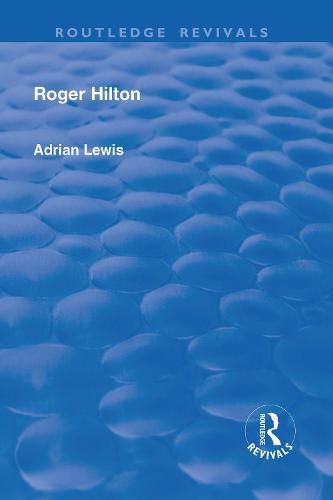Readings Newsletter
Become a Readings Member to make your shopping experience even easier.
Sign in or sign up for free!
You’re not far away from qualifying for FREE standard shipping within Australia
You’ve qualified for FREE standard shipping within Australia
The cart is loading…






This title was first published in 2003. Twenty-seven years after his death, Roger Hilton’s reputation as a leading figure in British ‘abstract expressionism’ continues to rise. Following the major retrospective exhibition at the Hayward Gallery in 1993 and the drawings survey at the Tate St Ives in 1997, this lavishly illustrated account is the first to provide a comprehensive overview of the life and work of this important artist. Hilton’s extraordinary career is discussed in all its phases, from the intriguing earliest explorations in paint to the inception of his first abstract pieces around 1950 and the complex and intriguing interchanges of imagery and form that mark his final works. Adrian Lewis explains the artist’s mature works as both attracting the viewer and resisting easy reading, and discusses in detail the artist’s debt to the Ecole de Paris and his relation to the notion of the ‘act of painting’ that pervaded post-war culture.
$9.00 standard shipping within Australia
FREE standard shipping within Australia for orders over $100.00
Express & International shipping calculated at checkout
This title was first published in 2003. Twenty-seven years after his death, Roger Hilton’s reputation as a leading figure in British ‘abstract expressionism’ continues to rise. Following the major retrospective exhibition at the Hayward Gallery in 1993 and the drawings survey at the Tate St Ives in 1997, this lavishly illustrated account is the first to provide a comprehensive overview of the life and work of this important artist. Hilton’s extraordinary career is discussed in all its phases, from the intriguing earliest explorations in paint to the inception of his first abstract pieces around 1950 and the complex and intriguing interchanges of imagery and form that mark his final works. Adrian Lewis explains the artist’s mature works as both attracting the viewer and resisting easy reading, and discusses in detail the artist’s debt to the Ecole de Paris and his relation to the notion of the ‘act of painting’ that pervaded post-war culture.